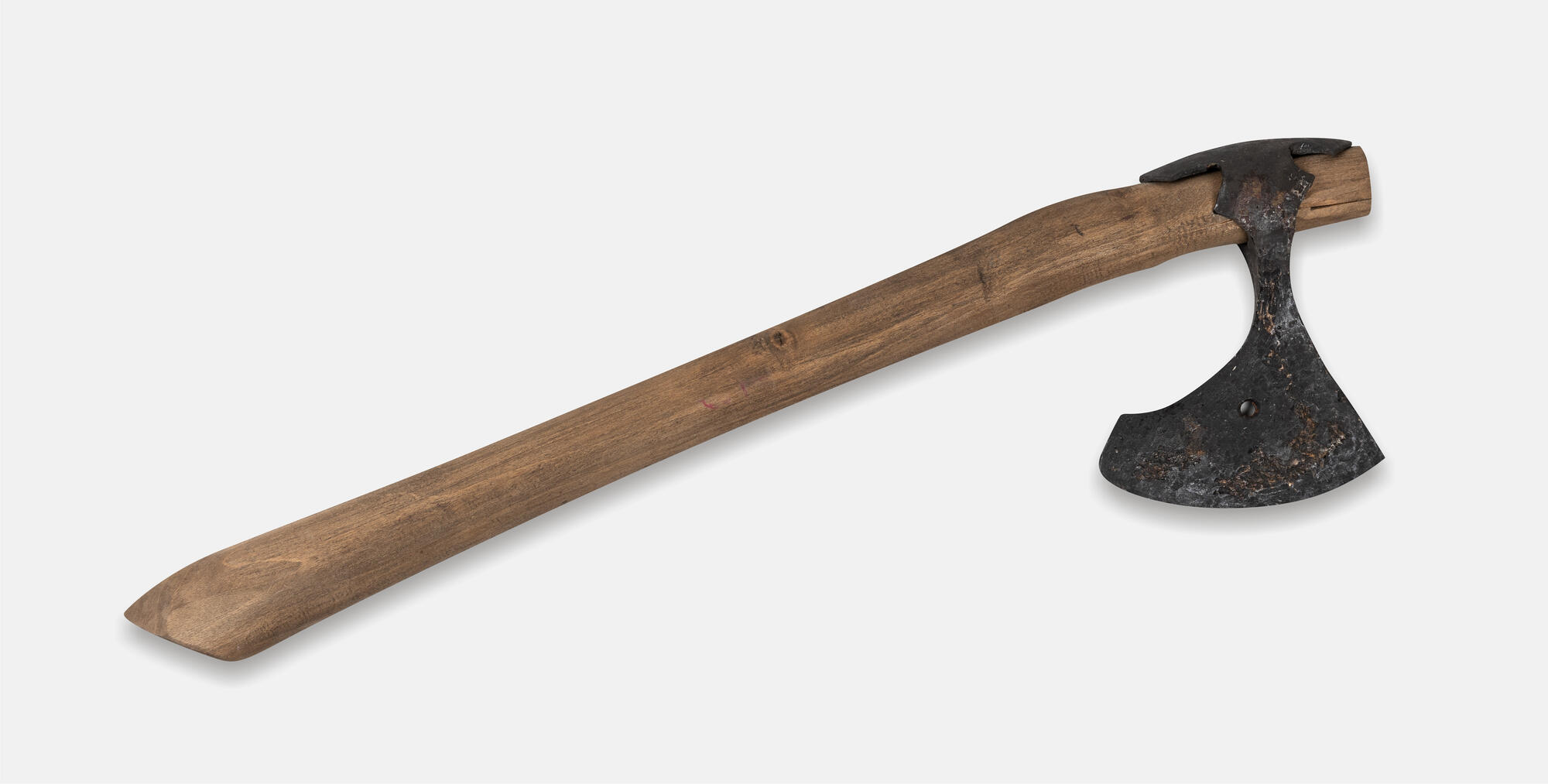The archeological collection of the Zelenogradsk Museum of Local Lore features a unique battle ax. This type of weapon was widespread in Prussian lands during the Viking Age, the period from the late first to the early second millennium AD. According to the classification of German artifacts, this weapon belongs to the third type of axes — the ones with an elongated trapezoidal blade, ending with a hook or protrusion. The hooked subtype has a blade length of 11 to 15.5 cm and a width of about 7 cm.
On the island of Gotland in the Baltic Sea, such axes appeared in the 10th century. The blade of an ax with a protrusion usually had a round hole. The Swedish researcher Frederik Paulsen believes that such axes appeared in the southeastern Baltic region in the 11th–12th centuries. Their blade was often decorated with silver chasing or stamping, which always marked off the blade. An ax decorated with such chasing from the Irzekapinis burials near Zelenogradsk is almost exactly the same as 11th-century Curonian and Livonian artifacts, which, however, tend to have simpler decorative patterns.
The patterns of these axes imitate a bird’s wing.
Such axes were likely suited for throwing, as they are similar in design to the
francisca — a battle ax used by the Franks and other Germanic peoples. A
francisca with a long handle was designed for chopping and one with a short
handle — for throwing, with a range of flight up to 12 meters. The use of axes
as throwing weapons is reflected in Scandinavian mythology, including the
collection of sagas and legends known as the Younger Edda. The handles were
made of ash and oak — the traditional materials that were used for polearms in
Europe.
The displayed ax was received by the Zelenogradsk Museum of Local Lore in poor
condition and was later restored. Such axes were widespread in Northern and
Eastern Europe during the early Middle Ages. Most Prussian axes, including the
one from the museum’s collection, were found in the north of the Sambia
Peninsula. Similar finds have also been discovered in the land of the Curonians
(modern territory of Lithuania) and the Livonians (modern territory of Latvia).



